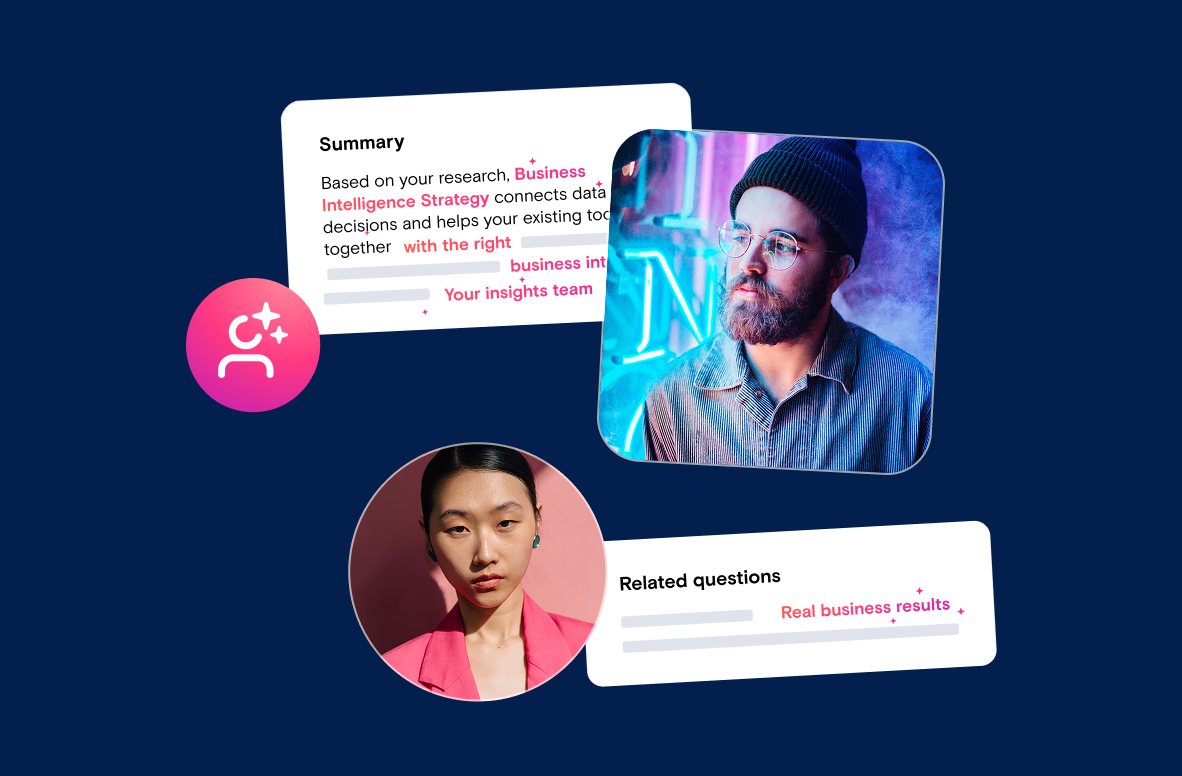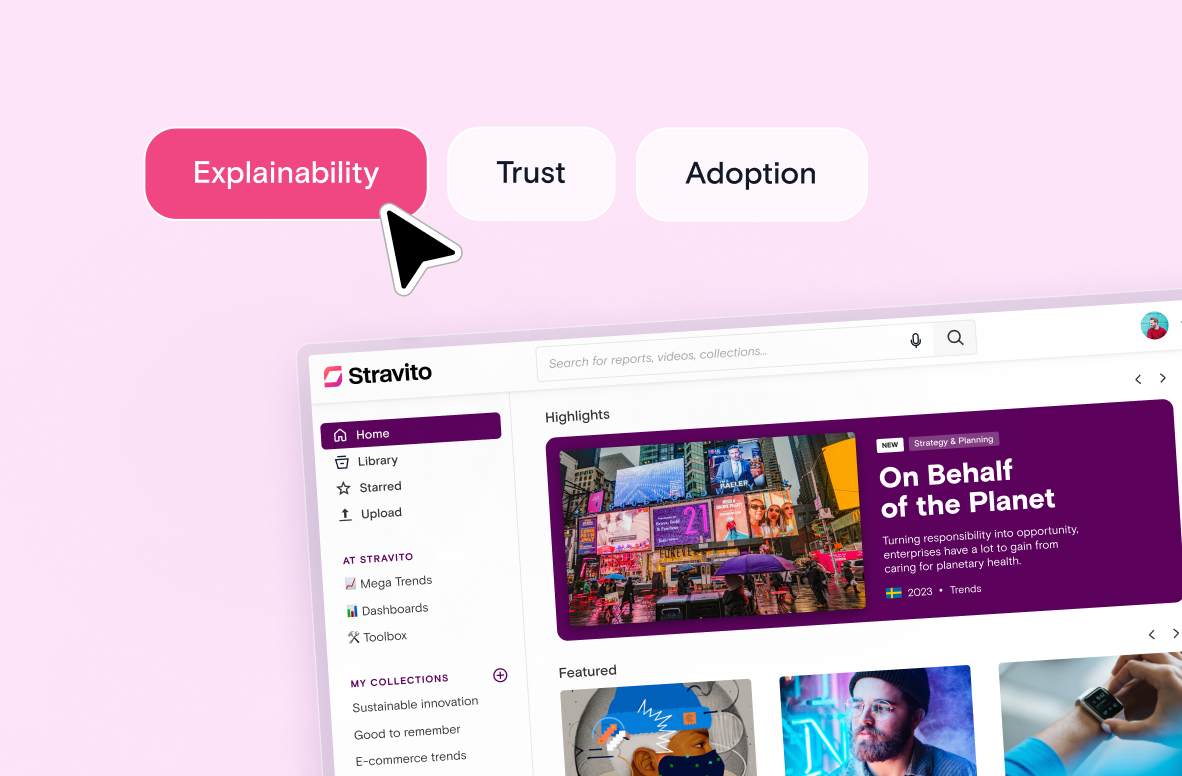Barrier #1: Too much information
In today’s information age, one of the biggest barriers to truly understanding your consumers is simply that you have too much information about them. By 2018, it was estimated that 2.5 quintillion bytes of data were created every day. And that rate shows no sign of slowing down.
If you pair that information with the finding that 55% of enterprise data goes unused on average, the problem starts to become much more clear. How can you truly be consumer-centric if potentially more than half of your data on them goes unused?
There are a variety of problems associated with not being aware of what you already know about your consumers. First, it’s very likely that you’ll be wasting your budget on duplicate research. Or, if you’re not commissioning duplicate research, it’s likely that you aren’t asking the right questions because you aren’t taking into account all of the information you already have.
And just having a shallow, data-based awareness of your consumers isn’t enough. You can’t just know what you know about them; you need to take time to really know them, to connect the dots and create a rich, holistic overview. Otherwise, you risk adding to information overload and paralysing your organisation with an endless flow of new (and not always useful) information.
As Estrella Lopez-Brea, Head of Insights for Snacks, Ice Cream, and Compete at General Mills explained in our interview with her, “Truly being consumer-obsessed or consumer-centric builds intuition and confidence in teams to move forward without the need to research every single tiny thing.”
But in order to get there, you need to ensure that your data informs, rather than overwhelms.
Barrier #2: Cognitive bias
The saying goes, “Always trust your gut”. However, there is a key difference between developing intuition based on rich, data-backed understanding, and projecting yourself onto the consumer. Despite our best efforts, we’re all prone to cognitive bias from time to time. This is why having quality consumer data at your disposal is so important. You need to understand who your consumers really are, not who you think they are.
In our interview with Estrella Lopez-Brea of General Mills, she offered an illustrative anecdote (and likely one you can relate to) about a meeting she attended where the results of a product test were being presented. The results of the study were far from positive, and one of her colleagues jumped in to challenge the results, saying “I disagree with this–I gave this product to my wife, and she loved it!”
It’s that easy to slip up and project yourself onto the consumer. And that’s precisely what makes it such an essential tendency to be aware of. Estrella explained:
“The moment that someone projects the consumer onto themselves or someone close to them, then that is their truth, right? And there's no way to change that––that one specific experience becomes the reality, and that bias stays there for the rest of the journey. So that’s one of the reasons why I think there's definitely room for all of us to talk about consumer centricity and keep making it a priority in organisations.”
Failing to understand the consumer and their needs is particularly an issue for innovation. In fact, research from BCG has found that companies often struggle with innovation because their ideas are inward-looking, failing to take into account the wide variety of external trends and psychological factors that shape consumer choice.
Barrier #3: The wrong attitude
Who in the organisation is responsible for consumer centricity?
If you’re not part of your organisation’s Consumer Insights function, you might be tempted to say that it should be their responsibility.
And if you are part of the Consumer Insights function, you might be used to this responsibility falling completely on you.
In our blog post on the importance of consumer centricity, we briefly touched on the 4 factors that Nielsen found to support innovation success and why successful innovations are inherently consumer-centric. To review, the 4 common factors were:
- Finding the right solution
- Testing it effectively
- Communicating it correctly
- Making the process a true team effort
The fourth factor gives you a clear hint at where we’re going with this, so let’s break it down. In most companies, it’s highly unlikely that the responsibilities of designing the solution, testing the solution, and communicating the solution will all be shared by the same team.
So by making consumer centricity the sole responsibility of the Consumer Insights function, all other functions, like R&D, category, packaging, or marketing are prevented from fully incorporating consumer understanding into their areas of expertise. Which means that likely somewhere along the line (or potentially even in several places) solutions are not fully centered around the consumer and thus less effective in attracting them.
Additionally, placing this responsibility only on Consumer Insights reduces the amount of time that Insights leaders can spend on in-depth analysis, connecting the dots to create the rich portrait discussed in Barrier #1.
Barrier #4: The wrong culture
But how can employees across the organisation feel empowered to come up with consumer-centric innovations if there is endless red tape to get through? Excessive bureaucracy can make it exceptionally challenging for a wide variety of functions to share their ideas for consumer-centric innovations. This not only slows down processes, but it can prevent a sense of empowerment in all teams, contributing to the problem of “it’s not my responsibility” discussed above.
As Cristina Kenz, Chief Growth Officer at Kraft Heinz International, explained in our interview with her:
“If bureaucracy means that you need to do presentation after presentation, powerpoint after powerpoint, especially in our current environment, you will stagger the conversation. If the ultimate decision is always made by the same person, who is the highest ranking officer, you will stagger the organisation. So these are things that I think are very important to watch out for. It’s a leadership journey: we all need to make sure that we know what we want to change, establish a very good vision, and then allow things to flourish.”
And as she explains, it’s not just a matter of limiting bureaucracy; it’s also about establishing a clear vision. If the organisational culture doesn’t instill consumer centricity as a core value and encourage curiosity, it will be challenging to ensure that consumer-centric decisions are made on a daily basis across the organisation.
In this blog
Author


.jpg)


